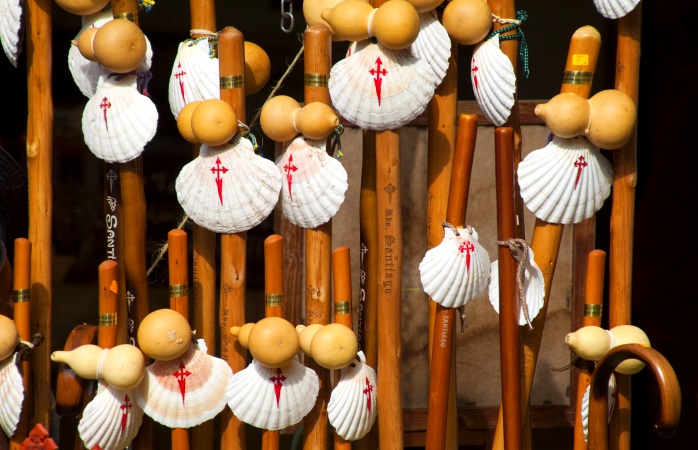
The shell is one of the most representative icons of the Camino de Santiago, its origins remain uncertain due to the number of stories and legends that relate it to the culture of pilgrimages.
For a long time it has been one of the representative images of the pilgrimage to the Cathedral of Santiago. Since ancient times it was the symbol that accredited that pilgrims had completed their journey along the Camino to pay tribute to the Holy Apostle.
How did the recognition of the Santiago Scallop originate?
The origins of its use go back to the first pilgrimages along the Jacobean route, when obtaining the document that accredited the culmination of the pilgrimage, a viera was awarded that was hung on the hat or tunic.
What does the Pilgrim’s Shell represent?
Much more than a recognition, it was considered a tribute to the apostle by the pilgrim, for the blessings granted during his journey to the Holy Sepulcher. Pope Benedict XVI recognized the importance of this emblem, including it on the papal shield.
Meanings of the Concha de Santiago
Today it is the symbol that best reflects the spirit of the pilgrimage to the city of Santiago, so much so that several of the sections on the different Jacobean routes are marked with a representative road.
This is closely related to the shape of an Oca’s footprint, as a sign of an initiation process. This is motivated because the Camino de Santiago itself is known as “the inner path” that will lead us to encounter God, or ourselves, in overcoming the ties to material goods.
What is the most told legend about this road?
Among the stories that revolve around the origin of the use of the Concha de Santiago as an icon among Jacobean pilgrims, the best known is set in Vigo. Going back to the arrival of the disciples of the apostle Santiago to Galician lands.
Upon reaching the shores of Vigo they witnessed the celebration of a local wedding, where they were included. Among the typical activities was the game of catching a spear in the air while riding a horse.
Then the miracle happened
When the groom’s turn came, he went in search of the spear, but unluckily fell into the sea with little chance of survival. Before long, the same raft that carried the remains of the apostle emerges from the depths, showing a living groom and his horse covered in scallops.
This story was one of the most well-known and popular origins of the traditional Santiago street.
Did you like our post?
Please rate this item with stars
Your opinion matters to us!
